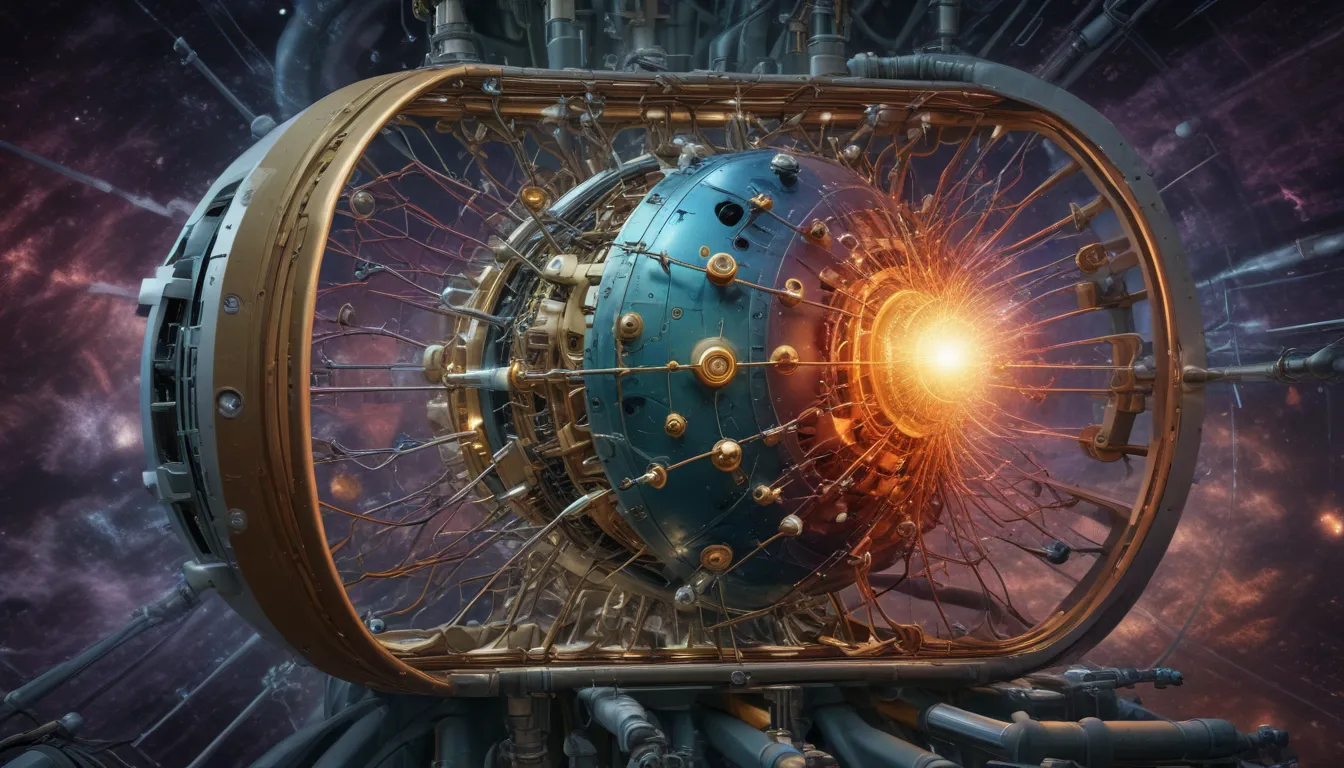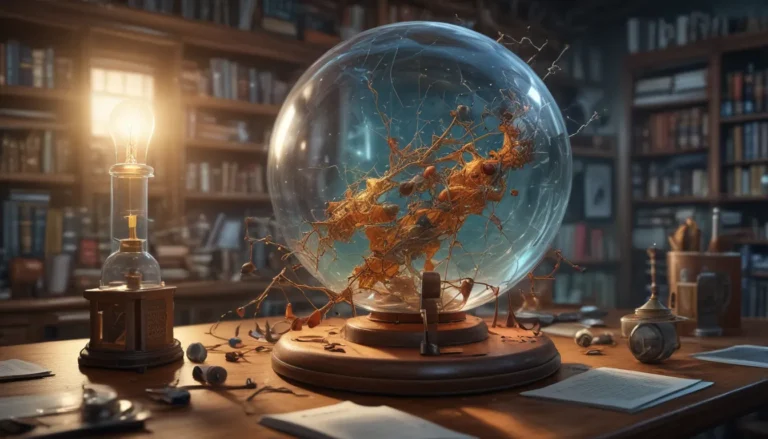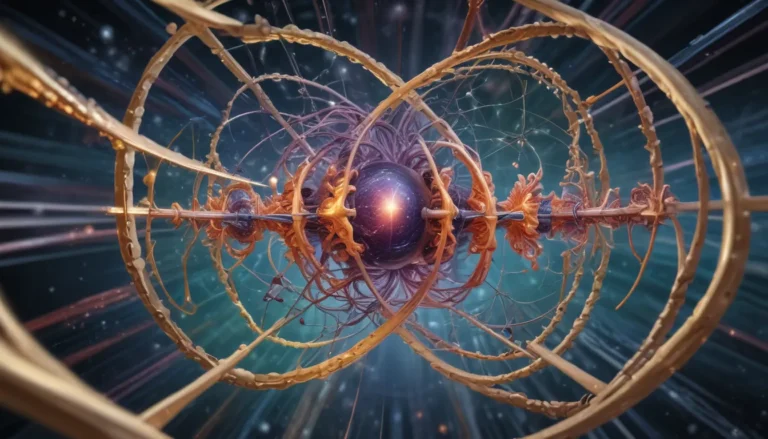A Note About Images: The images used in our articles are for illustration purposes only and may not exactly match the content. They are meant to engage readers, but the text should be relied upon for accurate information.
When delving into the captivating world of physics, the spotlight often shines on particles – the fundamental building blocks of the universe. These microscopic entities are the essence of all matter and energy that make up the world around us, from the tiniest atoms to the vast expanse of the cosmos. In this article, we will embark on a journey through the quantum realm, exploring the mysterious properties, mind-boggling behaviors, and groundbreaking discoveries that have revolutionized our understanding of the universe.
The Cosmic Zoo: A Magnificent Array of Subatomic Particles
The world of particles is a cosmic zoo teeming with a diverse collection of subatomic entities that form the essence of reality. From the intriguing quarks and leptons to the enigmatic bosons and hadrons, the Particle Zoo is a fascinating menagerie of tiny building blocks that shape the universe as we know it.
-
Quarks and Leptons: The fundamental constituents of matter, quarks come in six different flavors, such as up, down, charm, strange, top, and bottom, each carrying a fractional electric charge. Leptons, on the other hand, include familiar particles like electrons and neutrinos.
-
Bosons and Hadrons: Bosons mediate the fundamental forces of nature, while hadrons, made up of quarks, form the atomic nuclei that constitute matter.
Unraveling Quantum Entanglement: The Enigmatic Connection Between Particles
A phenomenon that transcends classical understanding, quantum entanglement is a mysterious bond that links two particles irrespective of the distance between them. When two particles become entwined, their states become intertwined, leading to instantaneous correlations that defy traditional notions of space and time.
The Higgs Boson: A Glimpse into the Subatomic Realm
In 2012, scientists at the Large Hadron Collider achieved a monumental feat by confirming the existence of the elusive Higgs boson, a particle crucial to understanding how other particles acquire mass. This discovery marked a significant milestone in the realm of particle physics.
Embracing Particle-Wave Duality: The Dual Nature of Subatomic Particles
One of the most perplexing aspects of particles is their inherent duality – the ability to exhibit both particle-like and wave-like behaviors. Subatomic entities like electrons and photons showcase this dual nature, showcasing the fascinating complexities of the quantum realm.
The Standard Model: Blueprint of the Particle Universe
The Standard Model stands as a cornerstone in physics, offering a comprehensive framework that outlines the fundamental particles and forces of nature. Through this model, scientists have gained valuable insights into the intricate interactions between particles, paving the way for numerous experimental achievements.
Embracing Anti-Matter: The Esoteric Mirror Image of Matter
In the dance of particles, for every matter particle, there exists an antimatter counterpart with an opposing charge. When matter and antimatter collide, they annihilate each other, unleashing a burst of energy. This delicate balance of particles and antiparticles continues to intrigue scientists worldwide.
Neutrinos: Ethereal Particles that Transcend Matter
Neutrinos, elusive particles with minimal interaction capabilities, traverse vast expanses of matter without significant hindrance. Produced in various cosmic processes, such as solar nuclear reactions, neutrinos offer a peek into the subtle, ghostly side of particle physics.
Unveiling Superposition: The Coexistence of Multiple States
In the quantum landscape, particles possess the remarkable ability to exist in superposition, simultaneously occupying multiple states. This peculiar phenomenon, epitomized by Schrödinger’s famed cat experiment, underscores the intricate and mystical nature of particles.
Deciphering Dark Matter: The Enigmatic Force Shaping the Universe
While visible matter constitutes only a fraction of the universe’s mass, dark matter reigns as the predominant force that shapes cosmos. A mysterious substance that evades traditional detection methods, dark matter exerts gravitational influence without interacting with light, ushering in a new realm of cosmic exploration.
String Theory: Unraveling the Fabric of Reality
String theory offers a novel perspective on the essence of particles, positing that these entities are not point-like but minute, vibrating strings. By seeking to reconcile quantum mechanics with general relativity, string theory provides a unified approach to understanding the fundamental forces of nature.
Quantum Tunneling: Defying Boundaries Through Particle Magic
Quantum tunneling defies conventional wisdom by enabling particles to penetrate energy barriers that would be insurmountable in a classical context. This phenomenon plays a pivotal role in diverse technological applications, showcasing the transformative power of particle interactions.
Black Holes: Unveiling the Cosmic Mysteries
When massive stars succumb to their gravitational pull, the resulting black holes manifest as cosmic vacuum cleaners, devouring all matter and light within their grasp. These enigmatic celestial objects challenge our perceptions of space, time, and the intricate interplay of particles near their event horizons.
Conclusion: Embracing the Marvels of Particle Science
Particles weave a tapestry of wonder that captivates scientists and enthusiasts alike, embodying the essence of cosmic exploration and inquiry. As we unravel the mysteries of particles, we unlock the secrets of the universe, shedding light on the fundamental forces and structures that shape our reality. The field of particle physics continues to evolve, ushering in new discoveries and breakthroughs that expand the boundaries of human knowledge.
The particles that permeate the cosmos serve as a testament to the boundless complexity and beauty of the universe we inhabit, inviting us to ponder the infinite wonders that lie beyond the twinkling stars above. As we continue our journey through the quantum realm, let us revel in the awe-inspiring intricacies of particle physics, a realm where mystery and discovery converge in a symphony of cosmic proportions.
FAQs: Unveiling the Enigmatic Realm of Particle Physics
- What are particles?
-
Particles are the fundamental units of matter that constitute everything in the universe, ranging from atoms to subatomic entities like protons and electrons.
-
What is particle physics?
-
Particle physics is a branch of science that delves into the fundamental particles and forces that govern the natural world, unraveling the intricate fabric of matter.
-
How do particles behave?
-
Particles exhibit a dual nature, embodying characteristics of both particles and waves, a fundamental principle known as wave-particle duality.
-
What is the Large Hadron Collider (LHC)?
-
The Large Hadron Collider serves as the world’s largest particle accelerator, located at CERN in Geneva, Switzerland, facilitating high-speed collisions to study particle properties.
-
What is antimatter?
-
Comprising particles with opposing charges to their matter counterparts, antimatter interacts with matter to produce energy through annihilation.
-
What is dark matter?
-
Dark matter stands as a hypothetical form of matter that influences gravitational forces without emitting or reflecting light, shaping the cosmos on a grand scale.
-
Can particles teleport?
-
Particles can exhibit quantum teleportation, a phenomenon where quantum information instantaneously transfers between entangled particles.
-
What is quantum entanglement?
-
Quantum entanglement describes a connection between particles where the state of one particle directly influences the state of another, regardless of distance.
-
How are particles discovered?
-
High-energy experiments, often conducted in particle accelerators, aid in the discovery of new particles by colliding them at high speeds to unveil their properties.
-
Are there different types of particles?
- Yes, particles can be categorized as fermions or bosons based on their spin, encompassing a diverse spectrum of entities like electrons, quarks, and bosons like photons.
-
What role do particles play in matter formation?
- Particles act as the foundational units that combine to form matter, comprising atoms, molecules, and various substances in the natural world.
-
How are particles linked to forces?
- Particles serve as carriers for fundamental forces in nature, with specific particles mediating interactions like electromagnetic and weak nuclear forces.
-
How are particles connected to energy?
- Particles are intertwined with the concept of energy, dynamically interacting and transforming between various states, showcasing the interconnected nature of matter and energy.
In embracing the realms of particle physics, we embark on an odyssey of discovery, where the mysteries and marvels of the cosmic order await our exploration. Let the magic of particles ignite your curiosity and illuminate the path to infinite knowledge and wonder.






